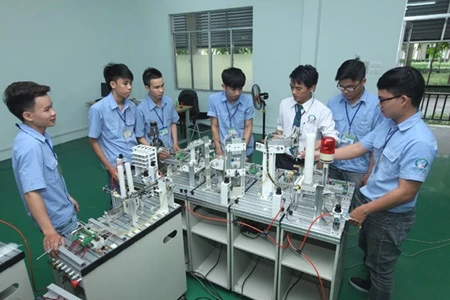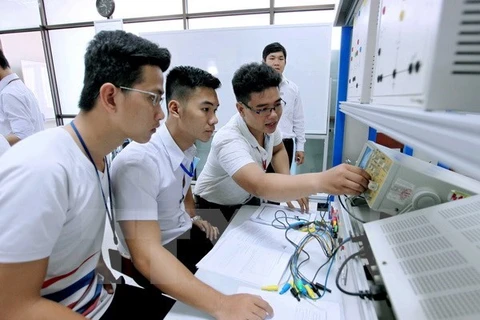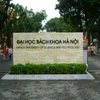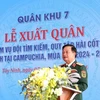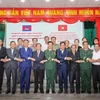Hanoi (VNA) - Universities and educational institutes must publicise their achievements, such as the rate of their graduates who have found jobs, before the national high school entrance exam of 2018, experts said at a recent conference.
Speaking at an online dialogue on the Government website chinhphu.vn on Friday, Dr Mai Van Trinh, director of the Ministry of Education and Training’s Department of Education Testing Accreditation, said making the quality of each university public would benefit school enrollment.
Many schools have well-equipped facilities and high-quality teaching staff, but still encounter difficulties in enrollment due to inefficient communication. If publicizing their results is compulsory, these schools would draw more students, he said.
Since 2009, the ministry has required all schools to publicize their performance in three areas - school facilities, teaching staff and financial revenue and expenditure. The data is posted on university websites, but their accuracy has not been confirmed, he added.
PhD Nguyen Quy Thanh, director of Hanoi National University’s Centre for Education Quality Accreditation, said there is a shortage of independent supervisors and evaluators of accreditation quality and no sanctions for those found to have announced inaccurate information.
Apart from the three criteria mentioned above, experts recommended that the ministry require schools to announce the rate of students getting jobs a year after graduation.
However, Thanh said some schools announce that up to 80 per cent of their graduates have found jobs, but failed to show the original questionnaire filled by students and employers when they were audited. Others carried out a survey on a very small number of students – only 30 per cent of total graduates – and came up with a high rate of employment. But that number was unreliable, he said.
Dr Nguyen Van Long, council chairman of the Hanoi-based University of Transportation, said that to conduct a survey of all graduates was an impossible task, but schools should select typical samples of students.
For example, he said, the University of Transportation would show that 85 per cent of graduates got jobs if it only chose graduates from the Traffic Construction Work Department – a popular faculty. The school had imposed sanctions to force graduates to report accurately on their careers, he added.
To get accurate and transparent information on the accreditation quality of universities and institutes, the director of the ministry’s Department of Education Testing Accreditation said that the ministry was drafting a circular setting out regulations on accreditation quality of higher education.
The detailed circular would help evaluate the positions of universities and colleges on the global map. The set of 111 criteria was based on the set of criteria of high-standard universities in the ASEAN region. The circular will be open for comments from the public.
Currently, centres of accreditation quality have been set up in Hanoi, HCM City and Da Nang. The centres have examined the education quality of 32 schools.-VNA
Speaking at an online dialogue on the Government website chinhphu.vn on Friday, Dr Mai Van Trinh, director of the Ministry of Education and Training’s Department of Education Testing Accreditation, said making the quality of each university public would benefit school enrollment.
Many schools have well-equipped facilities and high-quality teaching staff, but still encounter difficulties in enrollment due to inefficient communication. If publicizing their results is compulsory, these schools would draw more students, he said.
Since 2009, the ministry has required all schools to publicize their performance in three areas - school facilities, teaching staff and financial revenue and expenditure. The data is posted on university websites, but their accuracy has not been confirmed, he added.
PhD Nguyen Quy Thanh, director of Hanoi National University’s Centre for Education Quality Accreditation, said there is a shortage of independent supervisors and evaluators of accreditation quality and no sanctions for those found to have announced inaccurate information.
Apart from the three criteria mentioned above, experts recommended that the ministry require schools to announce the rate of students getting jobs a year after graduation.
However, Thanh said some schools announce that up to 80 per cent of their graduates have found jobs, but failed to show the original questionnaire filled by students and employers when they were audited. Others carried out a survey on a very small number of students – only 30 per cent of total graduates – and came up with a high rate of employment. But that number was unreliable, he said.
Dr Nguyen Van Long, council chairman of the Hanoi-based University of Transportation, said that to conduct a survey of all graduates was an impossible task, but schools should select typical samples of students.
For example, he said, the University of Transportation would show that 85 per cent of graduates got jobs if it only chose graduates from the Traffic Construction Work Department – a popular faculty. The school had imposed sanctions to force graduates to report accurately on their careers, he added.
To get accurate and transparent information on the accreditation quality of universities and institutes, the director of the ministry’s Department of Education Testing Accreditation said that the ministry was drafting a circular setting out regulations on accreditation quality of higher education.
The detailed circular would help evaluate the positions of universities and colleges on the global map. The set of 111 criteria was based on the set of criteria of high-standard universities in the ASEAN region. The circular will be open for comments from the public.
Currently, centres of accreditation quality have been set up in Hanoi, HCM City and Da Nang. The centres have examined the education quality of 32 schools.-VNA
VNA

